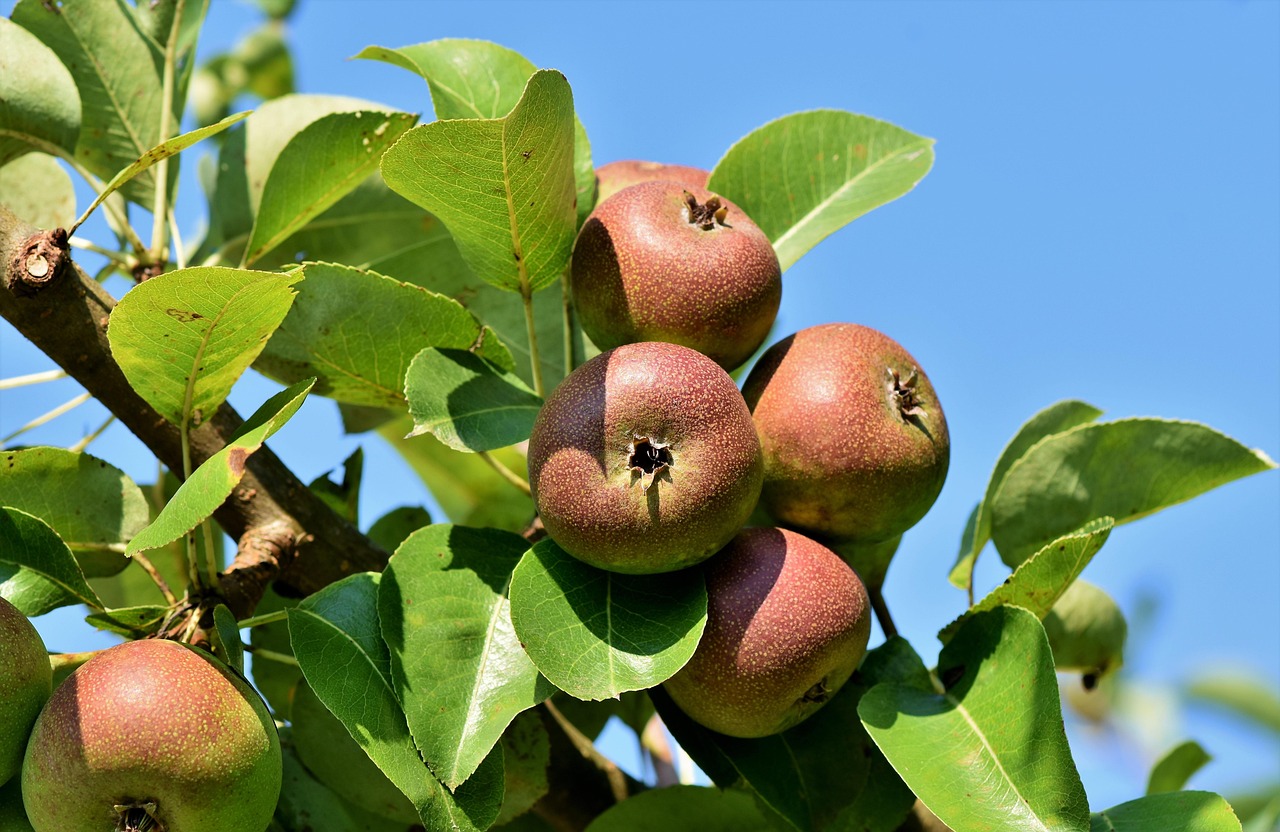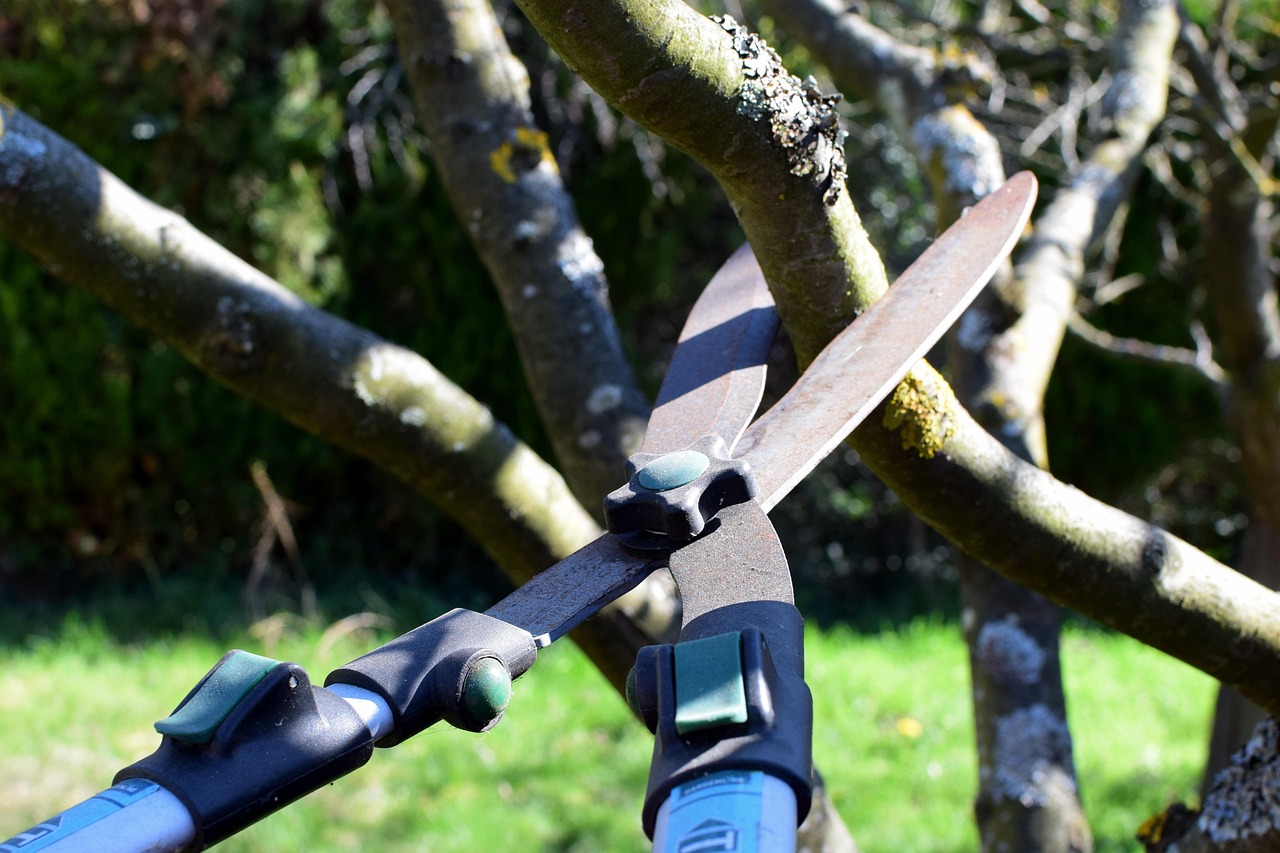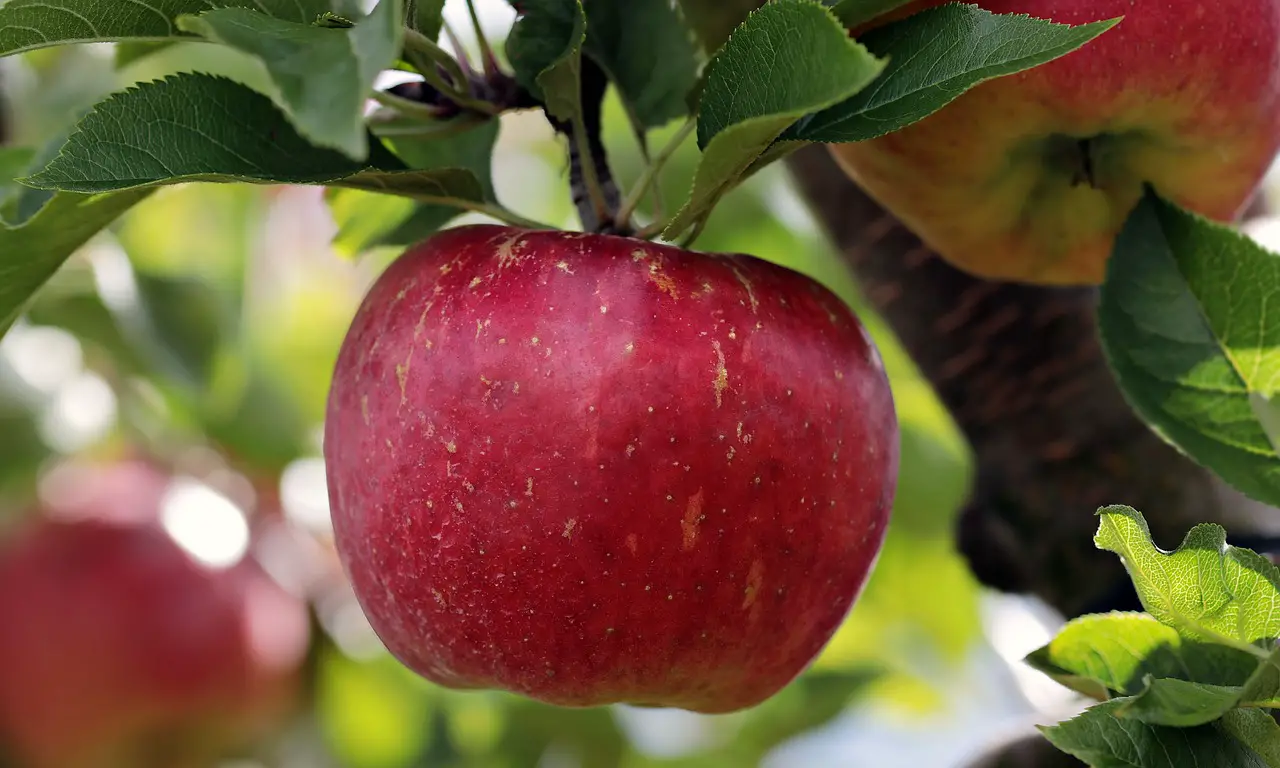Apple tree pruning is essential for family farms as it promotes healthy growth, enhances fruit quality, and increases yields. Proper techniques improve air circulation and light penetration, which are crucial for the trees’ overall health and productivity.
Pruning apple trees can seem intimidating, especially for those new to farming. However, understanding the basic principles can make the process easier and more effective. Apple trees require regular pruning to maintain their shape, remove dead or diseased wood, and encourage the growth of new fruiting branches. Family farms benefit significantly from these practices, as they can lead to better-quality fruit and more abundant harvests.

In addition to improving fruit quality, pruning helps manage tree height and shape. This is particularly important on family farms, where space may be limited. By controlling the size of the trees, farmers can make harvesting easier and safer. Furthermore, well-pruned apple trees are less susceptible to pests and diseases, reducing the need for chemical interventions.
Understanding Apple Tree Growth
Before diving into pruning techniques, it is crucial to understand how apple trees grow. Apple trees typically grow in a specific pattern, developing a main trunk and several lateral branches. These branches are where the fruit forms, making their health and structure vital for a successful harvest.
The growth of apple trees can be classified into several stages: vegetative growth, flowering, fruiting, and dormancy. Each stage has its own requirements and challenges. Pruning should be timed to coincide with these stages to maximize the benefits. For example, late winter or early spring is usually the best time to prune before new growth begins.

| Growth Stage | Pruning Focus | Timing |
|---|---|---|
| Vegetative Growth | Encourage strong branch development | Late Winter/Early Spring |
| Flowering | Thin out flowers if necessary | Spring |
| Fruiting | Remove excess fruit to prevent overcrowding | Summer |
| Dormancy | Maintenance pruning and shaping | Late Fall/Winter |
Understanding these growth stages allows family farmers to plan their pruning activities effectively. Timing is crucial because improper pruning at the wrong time can result in reduced yields or even damage to the tree.
Basic Pruning Techniques
There are several basic techniques that every farmer should know when it comes to pruning apple trees. These techniques can help ensure that the trees remain healthy and productive throughout their lifespan.
Thinning Cuts
Thinning cuts involve removing entire branches at their point of origin. This technique is beneficial for increasing air circulation and allowing more sunlight to reach the tree’s interior. Thinning cuts should be made carefully to avoid damaging surrounding branches.

Heading Cuts
Heading cuts involve cutting back a portion of a branch without removing it entirely. This technique encourages new growth from the remaining part of the branch. Heading cuts are often used to shape the tree and control its height.
Cleaning Cuts
Cleaning cuts are made to remove dead or diseased wood from the tree. This type of pruning is essential for maintaining the overall health of the tree and preventing the spread of disease. Regularly inspecting trees for signs of disease or damage can help identify areas that require cleaning cuts.
Tools for Effective Pruning
Using the right tools is essential for effective apple tree pruning. Well-maintained tools ensure clean cuts and reduce the risk of injury to the tree. Here are some common tools used for pruning:

- Pruning Shears: Ideal for small branches and precise cuts.
- Loppers: Useful for larger branches that are too thick for shears.
- Saws: Necessary for cutting through very thick branches.
- Gloves: Protect hands from sharp branches and thorns.
Each tool serves a unique purpose, so having a variety on hand can make the pruning process smoother and more efficient.
By mastering these basic techniques and understanding the growth habits of apple trees, family farms can cultivate healthy orchards that yield high-quality fruit year after year. The knowledge gained from effective pruning practices will not only enhance productivity but also foster a deeper connection between farmers and their crops.
Timing Your Pruning Activities
Timing is critical when it comes to pruning apple trees. Proper timing ensures that the trees can heal quickly and continue to produce fruit effectively. The following factors should be considered when planning your pruning schedule:
- Seasonal Changes: Different seasons offer unique advantages and disadvantages for pruning.
- Tree Variety: Some apple varieties may require specific timing based on their growth habits.
- Climate Conditions: Local weather conditions can influence the best time to prune.
Generally, the best time to prune apple trees is during the late winter or early spring, just before new growth begins. This timing allows farmers to make necessary cuts while minimizing stress on the tree. However, it is also important to consider specific weather patterns in your region.
Pruning in Late Winter
Late winter is often considered the optimal time for pruning apple trees. During this period, trees are dormant, which reduces the risk of sap loss and allows for healthier recovery. Pruning at this time can promote vigorous growth as the weather warms up. Here are some key points about late winter pruning:
- Cold temperatures reduce the likelihood of disease spread.
- Visibility of tree structure is clearer without leaves.
- Encourages new growth in early spring.
Pruning in Early Spring
Pruning in early spring can also be effective, especially if late winter conditions were not suitable. This timing allows farmers to assess any winter damage before making cuts. However, it is important to prune before bud break to prevent potential damage to new growth.
Farmers should be aware of local climate conditions when deciding between late winter and early spring pruning. A sudden warm spell can lead to premature bud break, which may affect the timing of pruning activities.
Common Mistakes to Avoid
Even seasoned farmers can fall victim to common pruning mistakes that can adversely affect apple tree health. Understanding these pitfalls can save time and resources in the long run. Here are some mistakes to avoid:
- Over-Pruning: Removing too much foliage can stress the tree and reduce fruit yield.
- Improper Cuts: Making cuts at the wrong angle can lead to decay or disease.
- Ignoring Tree Health: Not assessing the overall health of the tree before pruning can lead to unintended consequences.
A balanced approach is essential when pruning apple trees. Farmers should always strive for a healthy mix of thinning cuts and heading cuts while keeping tree health as a priority.
Specific Pruning Techniques for Different Tree Shapes
The shape of an apple tree can significantly impact the way it should be pruned. Different training systems exist, each with its own requirements. Understanding these systems can help farmers optimize their pruning efforts and improve fruit production.
Central Leader System
The central leader system is one of the most common training methods for apple trees. It involves maintaining a single main trunk with lateral branches extending outward. This shape allows for maximum sunlight exposure and air circulation. Here are some tips for pruning within this system:
- Establish a strong central leader early in the tree’s life.
- Regularly remove competing leaders that could disrupt the shape.
- Thin lateral branches to promote fruit development.
Open Center System
The open center system features a vase-like shape, allowing light to penetrate more deeply into the tree. This system is particularly effective for dwarf varieties. Pruning techniques include:
- Removing the central leader entirely to encourage a wide-open structure.
- Selecting three to five well-placed scaffold branches at different heights.
- Thinning interior branches to prevent overcrowding and improve air flow.
Post-Pruning Care
Once pruning is complete, it is essential to provide proper care for the apple trees to ensure they recover effectively. Post-pruning care includes:
- Watering: Ensure that trees receive adequate water, especially if there is a dry spell following pruning.
- Fertilization: Applying a balanced fertilizer can help support new growth.
- Pest Monitoring: Keep an eye out for any signs of pests or diseases that may emerge after pruning.
Caring for apple trees after pruning helps them recover and thrive, ensuring a fruitful harvest ahead. By understanding and implementing effective post-pruning practices, farmers can maximize their yields and maintain the health of their orchards.
Pruning Techniques for Specific Apple Varieties
Different apple varieties may have unique growth habits, fruiting patterns, and pruning needs. Understanding these specific requirements is crucial for family farms aiming to maximize their apple production. This section explores pruning techniques tailored to several common apple varieties, ensuring that farmers can apply the best practices for each type.
Early-Season Varieties
Early-season apple varieties, such as ‘Jonathan’ and ‘Gala,’ tend to bloom and set fruit earlier in the spring. Pruning these varieties requires special attention to timing and technique. Here are some recommendations:
- Timing: Prune early-season varieties in late winter or very early spring before flowering begins.
- Focus on Light Exposure: Thin out branches to improve light penetration, which is crucial for fruit development.
- Maintain Structure: Ensure that the central leader remains dominant while allowing lateral branches to develop adequately.
Late-Season Varieties
Late-season apples, such as ‘Fuji’ and ‘Honeycrisp,’ require a different approach due to their later blooming period. Key techniques for pruning late-season varieties include:
- Post-Harvest Pruning: Consider light pruning right after harvest to remove any dead or damaged wood while the tree is still active.
- Selective Thinning: Remove weak or crowded branches to ensure that remaining branches can bear heavier fruit loads.
- Encouraging New Growth: Focus on cuts that will stimulate new growth for the next season’s fruiting.
Dwarf Varieties
Dwarf apple trees are popular for family farms with limited space. They require unique pruning techniques to maintain their size and promote healthy growth:
- Frequent Pruning: Dwarf trees may need more frequent pruning than standard-sized trees to keep them manageable.
- Open Center Technique: Use the open center system to promote a vase-like shape, allowing maximum sunlight and air circulation.
- Branch Management: Regularly monitor and manage branch length to prevent overgrowth.
Pest and Disease Management Post-Pruning
After pruning, it is essential to monitor apple trees for pests and diseases that could threaten their health. Effective management strategies can protect the trees and ensure a successful harvest. Here are some common issues and preventive measures:
Common Pests
Pests such as aphids, codling moths, and spider mites can significantly affect apple trees. Recognizing these pests early can lead to effective management:
- Aphids: Small insects that suck sap from leaves, causing distortion. Use insecticidal soap or neem oil for control.
- Codling Moths: Larvae feed on developing fruit, leading to worms inside apples. Use pheromone traps for monitoring.
- Spider Mites: Tiny pests that thrive in dry conditions. Keeping foliage hydrated can help control their populations.
Disease Prevention
Diseases such as apple scab, powdery mildew, and fire blight can devastate an orchard if left unchecked. Implementing a proactive disease management plan is essential:
- Apple Scab: A fungal disease that causes dark spots on leaves. Select resistant varieties and apply fungicides as needed.
- Powdery Mildew: Characterized by a white powdery coating on leaves. Ensure proper air circulation and apply fungicides when necessary.
- Fire Blight: A bacterial disease that causes wilting and blackened branches. Prune out affected areas immediately and sterilize tools between cuts.
The Role of Mulching in Orchard Health
Mulching is an important practice that can enhance the health of apple trees post-pruning. Organic mulch serves several purposes:
- Moisture Retention: Mulch helps retain soil moisture, reducing the need for frequent watering.
- Weed Suppression: A thick layer of mulch can reduce competition from weeds.
- Nutrient Addition: As organic mulch breaks down, it adds nutrients back into the soil, benefiting tree health.
The best materials for mulching include wood chips, shredded bark, and straw. Apply a layer of 2-4 inches around the base of the tree while keeping it away from the trunk to prevent rot.
Irrigation Strategies for Newly Pruned Trees
Irrigation is vital for newly pruned apple trees as they recover from cuts and begin new growth. Choosing the right irrigation strategy can make a significant difference in tree health:
- Drip Irrigation: Provides a consistent water supply directly to the roots, minimizing waste and promoting deep rooting.
- Soaker Hoses: An effective method for delivering moisture slowly over a large area, reducing evaporation.
- Scheduling Watering: Regularly check soil moisture levels and adjust watering schedules based on weather conditions.
The right irrigation practices will support healthy recovery and ensure future fruit production remains robust. Proper care in the weeks following pruning sets the stage for a productive growing season ahead.
Additional Tips for Successful Apple Tree Pruning
To further enhance the effectiveness of pruning practices, there are a few additional tips that family farmers can consider. These tips can help ensure that the trees not only recover well from pruning but also thrive in the long term.
Regular Tree Assessment
Conducting regular assessments of apple trees can help identify issues before they become serious problems. Farmers should take the time to:
- Inspect Growth Patterns: Monitor the growth and development of branches to spot any irregularities.
- Check for Pests and Diseases: Regular inspections can catch signs of infestations or infections early, allowing for timely interventions.
- Evaluate Fruit Quality: Assess the size and quality of apples during harvest to gauge the effectiveness of pruning techniques.
Education and Training
Investing time in education and training about best practices in pruning can dramatically improve the skills of family farmers. Consider the following resources:
- Workshops and Seminars: Attend local agricultural workshops or seminars focused on tree care and pruning techniques.
- Online Resources: Leverage online courses, videos, and articles that provide detailed information on modern pruning methods.
- Networking with Other Farmers: Engaging with fellow farmers can provide valuable insights and sharing of successful strategies.
Understanding the Long-Term Benefits of Pruning
The long-term benefits of proper apple tree pruning extend beyond immediate yields. Investing time and effort into effective pruning practices can lead to:
- Increased Lifespan: Well-pruned trees are often healthier and can live longer, providing fruit for many seasons.
- Higher Quality Fruit: Enhanced light penetration and air circulation contribute to the development of larger, tastier apples.
- Better Pest Management: Open canopies reduce humidity levels, making trees less susceptible to certain diseases and pests.
Moreover, a well-maintained orchard presents a more appealing aesthetic for family farms. This can lead to increased agritourism opportunities, where visitors come to enjoy the beauty of apple blossoms or participate in harvest activities.
Final Thoughts
Apple tree pruning is a vital practice for family farms aiming to produce high-quality fruit. By understanding the basics of tree growth, employing appropriate pruning techniques, and implementing effective post-pruning care, farmers can significantly enhance their orchard’s health and productivity.
The journey to successful apple tree management is ongoing. Regular assessments, continuous education, and mindful care will lead to fruitful trees that contribute positively to family farming operations. With dedication and attention to detail, apple trees can yield bountiful harvests for years to come, enriching both the farm and the community it serves.
In conclusion, adopting a comprehensive approach to apple tree pruning cultivates not only healthier trees but also a deeper connection between farmers and their land. As family farms implement these strategies, they pave the way for sustainable agriculture that honors tradition while embracing modern practices.
